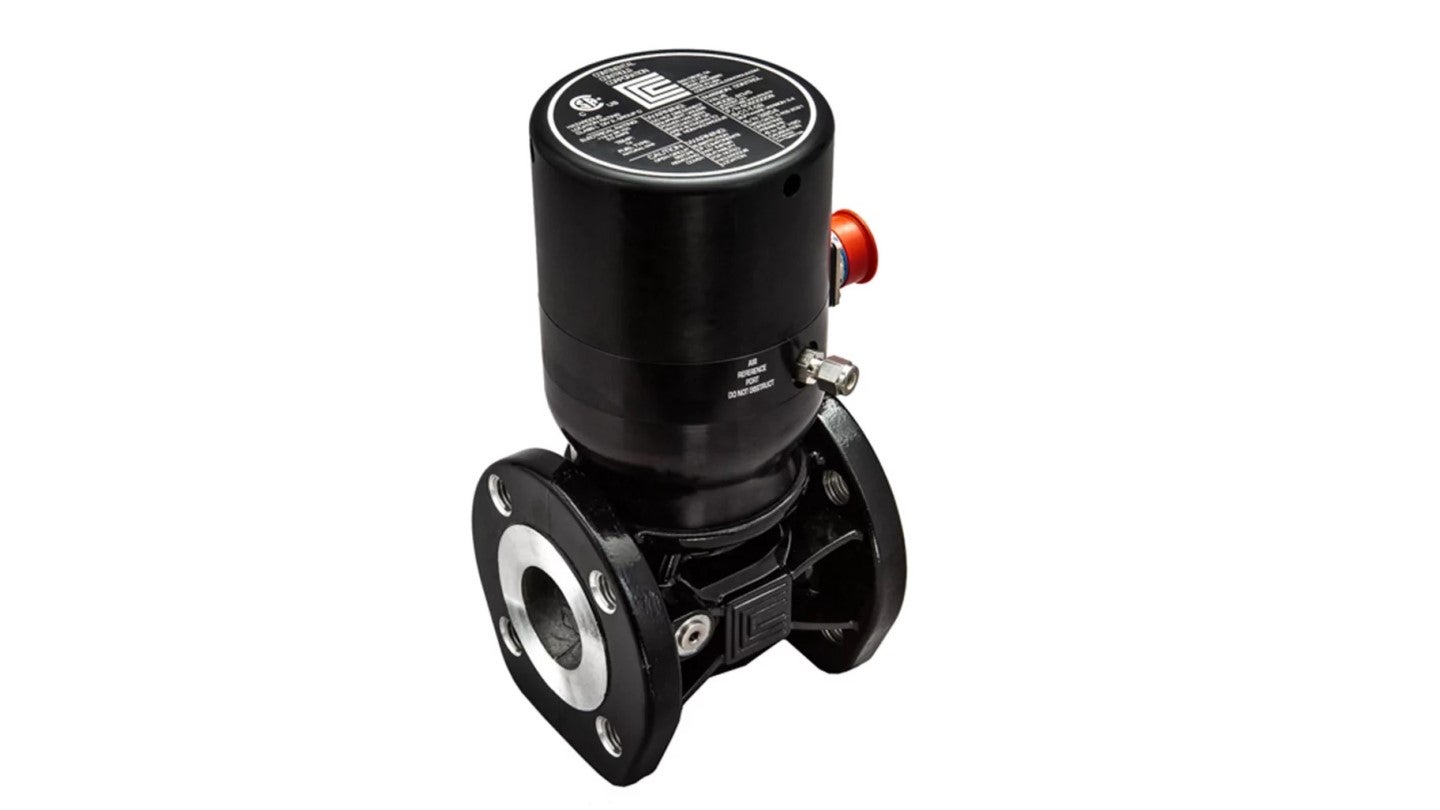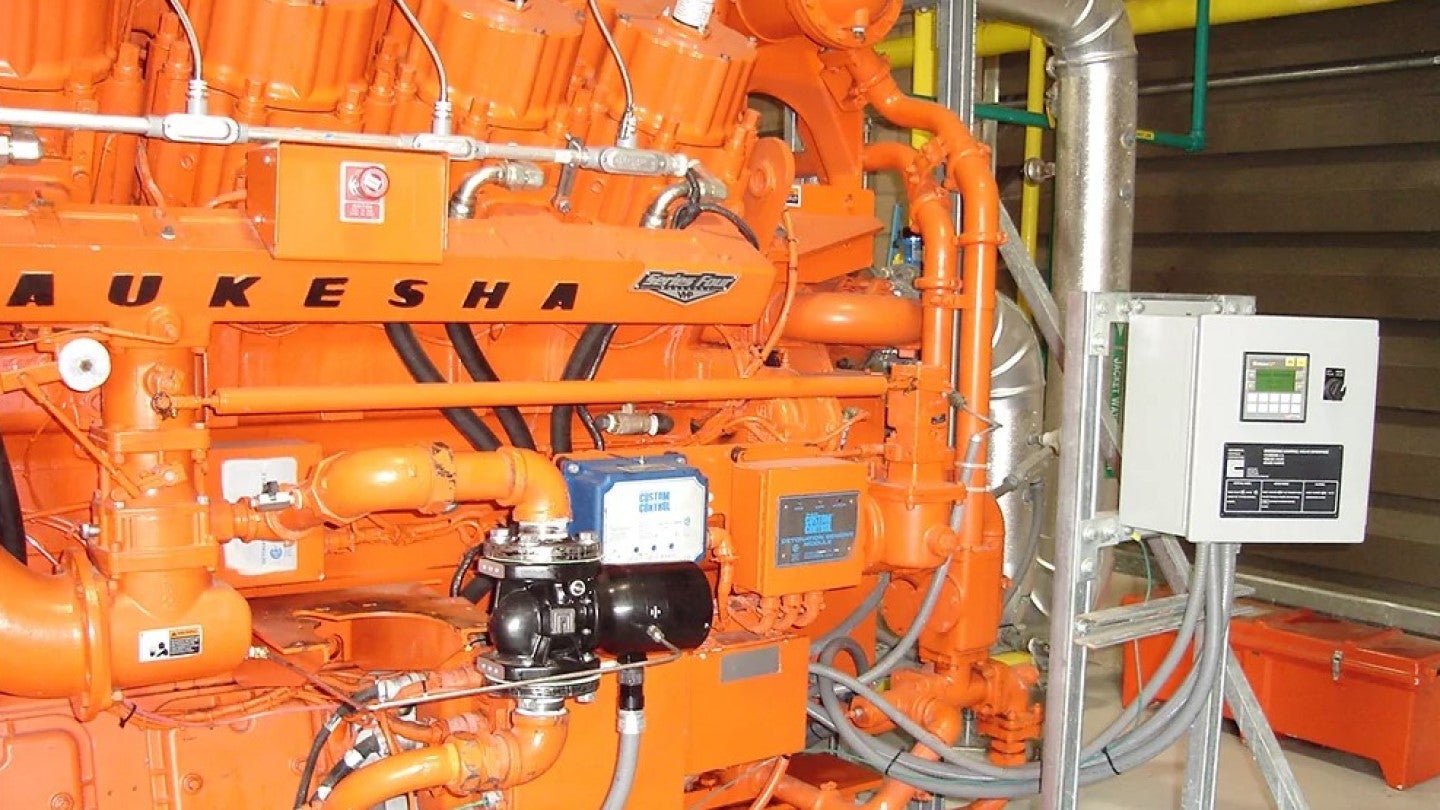
The ECV 5 is a complete emission control system for gas engines. The ECV 5 can be configured for controlling either rich burn or lean burn gaseous fueled engines. Fuel can be either natural gas or other alternative fuels.
The system consists primarily of the variable pressure control valve, which accepts an input from either a narrow band or a wideband oxygen sensor located in the exhaust of the engine.
The ECV 5 valve will vary the fuel pressure based on an O₂ set point compared to the actual O₂ reading from the oxygen sensor. This closed-loop, variable pressure control technique is patented by Continental Controls and offers a superior method for reducing emissions.
The ECV 5 is an electronically controlled servo valve with the electronics to control the Air / Fuel Ratio included inside the valve. It uses a nested loop control scheme with the outer loop controlling on the position based on feedback from an LVDT.
The inner loop controls on pressure based on feedback from an internal pressure transducer, which measures downstream pressure. This two-loop approach provides an exceptionally fast response while still offering optimal accuracy.
When used with a three-way catalytic converter, the ECV 5 can meet even the most stringent emissions requirements for NOx, CO and NMHC. The ECV 5 is generally excepted to meet Best Available Control Technology (BACT) standards.
The ECV 5 can be used in a complete stand-alone mode without a display. In this case, a laptop computer is used for the initial set up of the operating parameters.
Many times local air boards require the monitoring of other items that might affect emissions. Other items to monitor might include pre and post-catalyst temperature, O₂ sensor feedback and warm-up time. By adding the optional display (ECVI), all of these functions and the general health of the ECV 5 and oxygen sensor health can be monitored.
The ECV 5 offers on-board diagnostics (OBD) to provide operator feedback for conditions that would indicate a potential problem in the emissions control system. The ECVI display can turn on an alarm either attached to the ECVI or via a discrete output to a station alarm to indicate a problem. Most often, this would be related to an oxygen sensor requiring replacement.
The ECV 5 excels at applications that challenge most competing air-fuel ratio controllers. When the heating value of the gas varies or the application requires large load transients or supply pressure varies, many systems can not handle these changes. The ECV 5 has the speed and the range, along with the patented variable pressure control, to keep the engine in compliance even when these difficult situations arise.
The ECV 5 can be used to control engines in a lean burn mode when used in conjunction with a wideband oxygen sensor. Lean burn control offers many advantages over rich burn such as reduced exhaust temperatures, improved fuel economy and possibly reduced maintenance and longer engine life.
Dual-bank engines such as most Waukesha models are ideal candidates for the ECV 5. On the dual-bank engines, one ECV 5 is used for each bank when there are separate fuel manifolds. On some engines even though they are dual-bank, there is a single manifold and pressure regulator. On these engines, a single ECV 5 can be used.


